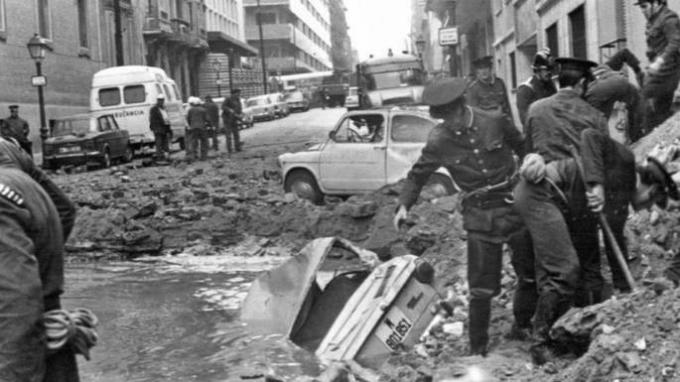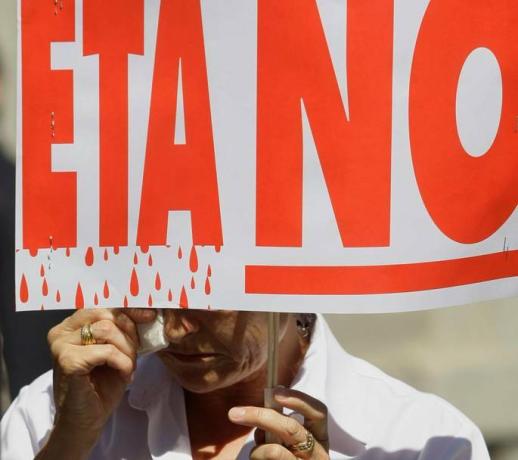ETA - acronym in Basque for Euskadi Ta Askatasuna (Euskadi Fatherland and Liberty) - is a Basque separatist group that has its origins in the Spanish Basque Country.
Founded in 1959 as a cultural association in the late 70s, its main objective was to proclaim the independence of the Basque Country. For this, he used violent methods that consisted of murders, kidnappings, extortion and threats.
In 2011, the group announced the end of its armed actions and in 2018, its dissolution.
Origin and Objectives of ETA
After the installation of Francisco Franco's dictatorship, after the Spanish Civil War (1936-1939), any regional cultural event was prohibited.
Franco's government vetoed the use of the Basque language, the local flag or exalting the region's leaders. In this way, in 1959, a group of university students founded a cultural association to promote the Basque language and culture.
The organization adopts the line of Marxist-Leninist theories and readings that talk about the need to resist the oppressor through guerrilla warfare.
It is also the time of Cuban revolution and the Algerian War, when leftist groups managed through struggle to change the destiny of their countries.
They also identify with the movement of decolonization of African countries. For them, the Basque Country would be a region occupied by a foreign power, Spain, and every form of liberation would be valid for achieving independence.
attacks

Within this logic, the group carries out several violent attacks to achieve its goals. In this way, they commit murders against politicians of right-wing parties, military and police commanders, some of them known torturers of Franco repression.
At this moment, ETA obtains the sympathy of part of the Spanish population, because it understands that they were fighting against the Franco regime.
The biggest political attack, however, was against the government president Carrero Blanco, in Madrid, on December 20, 1973. Attacks on police officers and members of the Civil Guard followed.
In order to finance their actions, merchants and entrepreneurs in several cities in the Basque Country should contribute to the revolutionary cause through the "revolutionary tax". Anyone who refused to do so was threatened with death and, in many cases, murdered.
With the arrival of democracy and the recovery of old rights that the Basque Country had lost during Francoism, many thought that ETA would abandon its activity. However, the organization became increasingly radical and began to reach out to left-wing politicians and civilians as well.
The bomb that caused the most deaths occurred in Barcelona when a bomb was placed in the parking lot of the Hipercor supermarket on June 19, 1987. The explosion left 21 dead and 45 injured.
Numbers of Attacks
ETA's terrorist actions left 854 dead, 6 389 injured, 86 kidnappings (with 10 dead), 700 attacks (224 of them unresolved).
It is important to note that 80% of the attacks committed by ETA were carried out during the democracy.
Until 2011, when the group announced the end of its actions, 3,300 people were under the protection of the state. In 2018 there were 225 etarras (ETA members) in Spanish prisons.
End of ETA

On October 20, 2011, members of the terrorist organization ETA announced the end of their activities and their willingness to hand over the arsenal they had in their possession.
The group was going through a moment of deep division, and it no longer had the support of the Basque or Spanish population. The scenario of the 60s and 70s, of fighting an oppressive nation, no longer made sense.
In May 2018, in the presence of foreign journalists and observers, the group handed over arms and announced the end of its existence. No Spanish authorities were present at the ceremony.
ETA and IRA
The ETA and IRA (Irish Republican Army) organizations were the most active terrorist groups in Europe in the 1960s and 1970s.
Both shared the same view that it was necessary to use violence in order to achieve their political goals. They understood that their victims should be military targets, but they also carried out indiscriminate killings of civilians.
Although they were very similar, there are notable differences between the Basque and Irish groups. The IRA has always had a religious component due to the situation between Catholics and Protestants, something that was rejected from the beginning of the formation of ETA.
Also, because it was structured like an army, the IRA hierarchy was more centralized than the Basque group, which was divided into regional commands and were more independent from each other.
In 2005, the IRA announced the end of its activities.
Be sure to read these texts:- Greatest Dictators in History
- Algeria War
- Independence of Catalonia
